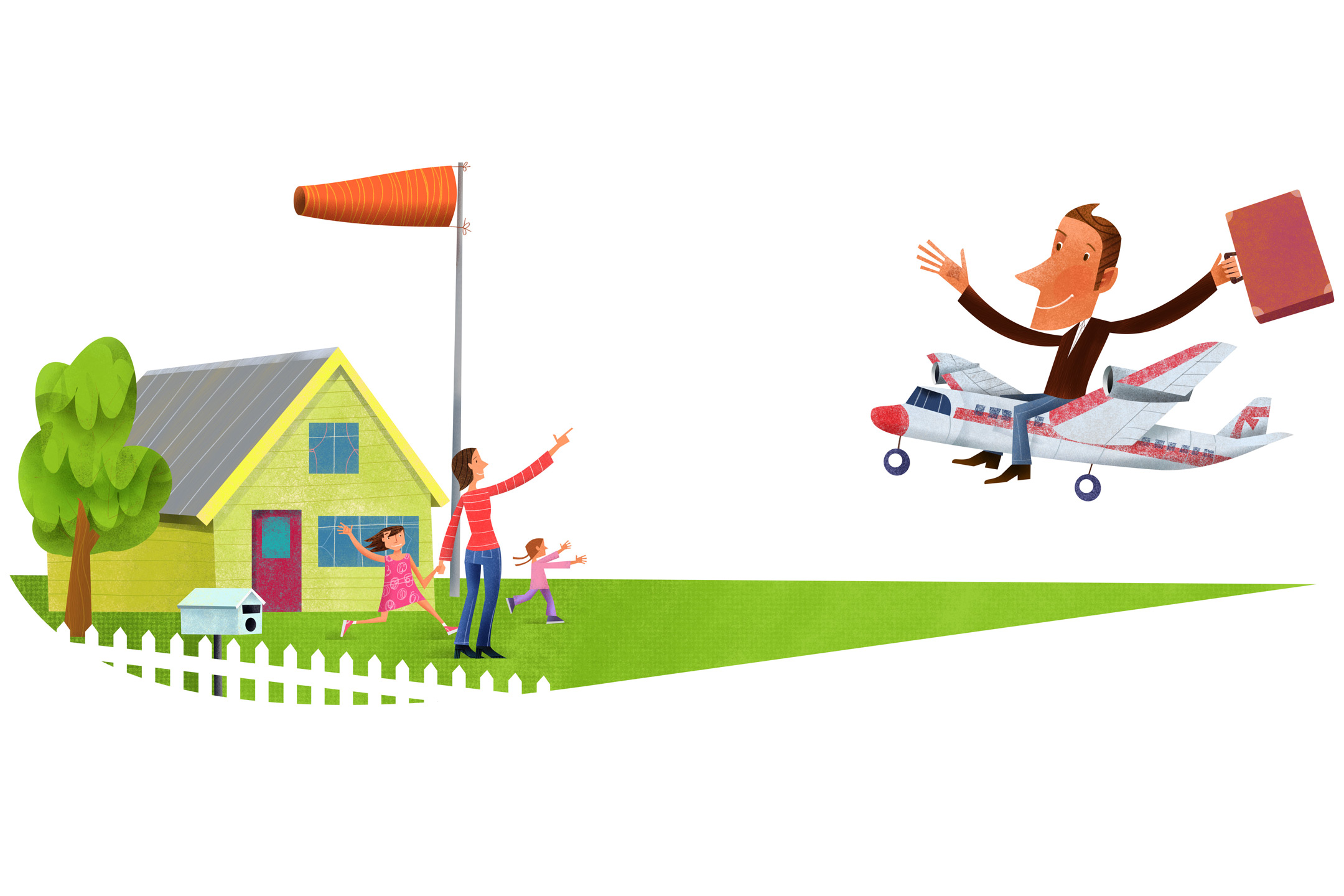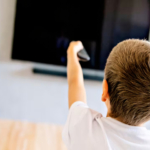
11 Jan A FIFO Life
Mother of two, Louisa Gibson, discovers how grounded she can be as she copes with the impact of her husband’s fly-in, fly-out employment.
I live in the twilight zone between wife and single mother. Like many others, my husband is a fly-in fly-out (FIFO) worker, and we live around his ‘11 days away and three days home’ roster.
When he is away, I switch into organised mode, focusing on our daughters, the household routine and getting the job done. I miss him, yes, and his support certainly, but I try not to entertain those thoughts for too long. Instead, I look at what is important right now. When he is home, we play the balancing act between couple time, family time and personal time. In some ways, it is the most challenging part of the fortnight.
The three days go by quickly and are filled weeks in advance. A month is six days and eight nights home in FIFO time, and if his plane is delayed by even one hour, it means our daughter, who tries to stay awake to greet him, will be unable to keep her eyes open long enough. Prioritising our time together means catching up with friends is close to impossible, and extended family a struggle. If one of us is sick, that’s half a FIFO month gone, and an emergency can rob us of the other half. Daddy finds it difficult to discipline his girls when he sees them so rarely, and our daughters use this to their advantage. Family life has certainly taken on a new flavour.
My husband joined the FIFO workforce two years ago out of necessity, not choice. He was made redundant at the start of the global financial crisis, and few employers were hiring. We were grateful for the job but probably wouldn’t have considered it otherwise.
We were worried about the impact it would have on my mental health, given my history of postnatal depression. Those were dark days after our first daughter was born; it took every ounce of my energy to lift my head off the pillow. I relied on my husband heavily, and he was often forced to drop everything at work and hurry home to find me curled up on the sofa, shaking with anxiety. In those days, I couldn’t envisage the future at all, let alone imagine a time when I might take on the responsibility of two children, a job and a household without backup. The tunnel was dark, and I was stuck halfway down.
Luckily, or perhaps due to a supportive husband and extensive medical and psychological treatment, I recovered quickly and didn’t relapse when our second daughter was born. Nonetheless, the reality of being left to cope without my husband made me question myself, and there is no doubt it was a hard adjustment to make. Our daughters slipped into the routine quite easily, but I found the separation taxing and lonely, and keeping up with the perceived demands of others was to my own detriment.
Little by little, I learned to do it by myself and have developed enormous respect for single mothers. I now realise I am capable of more than I thought and have even come to embrace some of the bonuses of the FIFO lifestyle. When my husband is home, 1000 kilometres separate him from work, so he can’t slip back to the office. The frequent-flyer points are accumulating at an accelerated rate. There have been funny moments, too, such as the time I realised I was too short to change light bulbs, and we lived by torchlight for a week.
The recent years have put things into perspective. Our younger daughter has been hospitalised twice with severe asthma, and I’ve had a breast cancer scare and related surgery. I’ve learned it’s okay to let go sometimes and not expect too much of myself. I always take our older daughter to school, our younger daughter to daycare, and myself to work. Likewise, homework is completed, dinner is always on the table, and the girls have a bath, go to bed with a bedtime story, and cuddle. Everything else is optional.
I no longer accept social invitations if they mean driving too far, coming home too late or cooking too much. If I’m sick, I take sick leave, and if volunteering at our daughter’s school feels like a stretch, I just say no. If I can’t function, then everyone suffers, so addressing my own physical and mental health is crucial in considering my family’s needs. This is the lesson FIFO has taught me.
When I think back to the time when our baby’s cry would have triggered a panic attack, I realise that not only have I exited the tunnel, but I have done so stronger and more determined. I still want my husband home every night, but I know that if it can’t be that way for a while, then in the meantime, our daughters and I will be okay.
Illustration by Gregory Baldwin
Mining Family Matters:
The Survival Guide for Mining Families (second edition) aims to ease the pressures of fly-in, fly-out mining. It’s a 32-page A5 booklet that’s available to both companies and individual couples. After receiving lots of interest from companies involved in construction, security, pipelines, etc, we converted the same content into a generic guide for employees who work away in any industry. It’s called Working Away: A Survival Guide for Families (second edition), and it’s sold worldwide.



